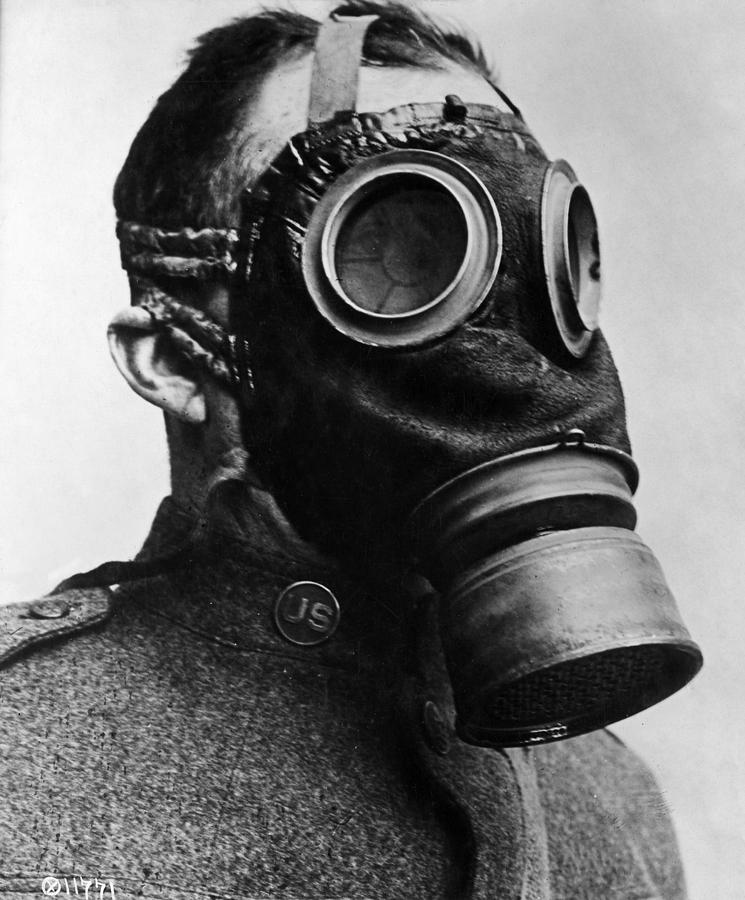

The P, PH and PHG Helmets were all based on Macpherson’s The Phenate-Hexamine-Goggle (PHG) Helmet, was developed for artillerymen to protect them from tear gas as well as chlorine and phosgene. By July 1916, the PH Helmet was the most common among British and Canadian troops in France. The helmets were therefore treated withĪ phenate-hexamine solution and issued as the PH Helmet from January 1916 the Canadian Corps received their first PH Helmets in early February. However, it soon became clear that the P Helmet didn’t protect the wearer when exposed to large concentrations of phosgene. It also featured glass goggles and a tube-shaped valve. This version was soaked in sodium phenate and offered In mid-November 1915, the Phenate (or “P”) Helmet was issued to Canadian and British soldiers. The mask was modified as new chemical agents, particularly phosgene, were developed and used in attacks. The Hypo Helmet also caused headaches - likely because of a buildup of carbon dioxide, as there was no valve for either inhalation or exhalation. The hood was also difficult to fit and made it hard to aim a weapon. It also fogged up quickly, which made it difficult to see, while the chemical treatment irritated both the skinĪnd eyes. The mica visor was fragile and was soon replaced by a celluloid or cellulose acetate version.

The Hypo Helmet had several drawbacks, however. Gas attack was expected (but never happened). They were also issued to Australian and New Zealand soldiers in Gallipoli in late 1915, where a Turkish The British army began issuing the Hypo Helmet in May by 6 June 1915, British and Canadian troops in France had received the new gas masks. The hood was worn over the head and tucked in at the neck it therefore stayed in place more easily than the Black Was known as the “Hypo Helmet” because the chemical solution included sodium hyposulphite as well as sodium bicarbonate and glycerine. The hood was a flannel bag soaked in a chemical solution, with a visor of mica. His prototype was based on a captured German helmet, which he covered with a cloth hood. Who began working on the mask soon after the first gas attack on 22 April 1915. It was designed by Captain Cluny Macpherson, medical officer of the First Newfoundland Regiment, The Black Veil Respirator was quickly replaced by the Hypo Helmet (or Smoke Helmet). Veil Respirator, which had a string to hold the pad in place. On, the army issued 30,000 gauze-wrapped cotton pads that were saturated in sodium bicarbonate and held over the nose and mouth.

As gas attacks continued, the BritishĪrmy struggled to protect its soldiers. This way, the chlorine would crystallize on the cloth before reaching their lungs. Canadian troops were quickly ordered to hold cloth soaked in water or urine over their faces. Many died while most survivors suffered lifelong lung problems.Ī second gas attack came two days later. Men were blinded, and their lung tissue destroyed. When the gas combined with moisture in the eyes, nose and lungs, it became an acid that caused burns and blisters. The cloud of yellow-green gas (about 10 km wide and 1 km deep) drifted over the Algerian (French) and Canadian lines and settled in the trenches. The 1940 model has been part of the museum collection since 1959 and was provided by the Faculty of Veterinary Medicine's Zootechnical Institute.On 22 April 1915 during the Second Battle of Ypres, the German army launched the first chlorine gas attack of the war, releasing approximately 160 tons of gas into the air. The Utrecht University Museum's Veterinary Medicine Collection includes two equine gas masks produced during World War II: one from 1940 and one from 1944. This included a special equine gas mask, which was subsequently improved upon by other researchers around the world. The team developed guidelines and new protective equipment for military animals, especially horses, dogs and pigeons. Arie Klarenbeek (1888 - 1972) and a small team of fellow researchers at the Faculty of Veterinary Medicine conducted secret tests to find ways of protecting humans and animals from mustard gas. The aim was to protect both people and animals, feed, water and food from the weaponised gases. These efforts were based on a One Health approach. Experts, including veterinarians, were called in to help develop defensive tools and measures. In the wake of this gas war, military authorities - even in the 'neutral' Netherlands - started working to defend themselves against such weapons.


 0 kommentar(er)
0 kommentar(er)
